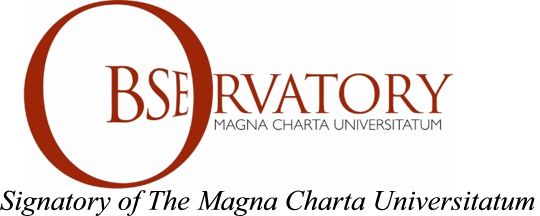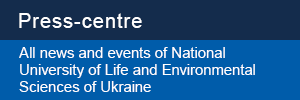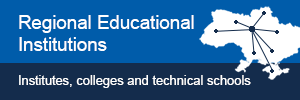FIRE AND FOREST SCIENTISTS WRITE LETTER VOICING CONCERNS OVER NEW U.S. FOREST SERVICE DIRECTIVES
Published by https://news.unm.edu/
USA – The following letter was written by a group of more than 40 fire and forest scientists led by The University of New Mexico’s Matt Hurteau, a professor in the Department of Biology. It addresses concerns with a recent decision over new directives aimed at requiring Preparedness Level 2 and Regional Forester approval for prescribed burns. The blanket national policy is focused on reducing short-term risks but does not account for the fact that national forests and grasslands in the United States cover a large geographic area that experiences a wide variety of climatic conditions.
We are a group of fire and forest scientists who study the range of interactions of fuels, fire, climate, and management. We are writing to express concern over your new directives to stop managing fire for resource benefit and requiring regional Preparedness Level 2 and Regional Forester approval for prescribed burning. Certainly, we recognize the underlying rationale to address short-term risks of escaped wildfires. Even if temporary, these directives will significantly limit options for resource managers in a time when increasing the pace and scale of forest restoration and fuel reduction is of critical importance. We request that you consider modifying the order, returning decision-making about managed fire and prescribed burning to the forest and district levels.
Forests across the western U.S. are naturally fire-prone, with fire return intervals ranging from years to decades and even centuries. Fire exclusion, along with historic logging that removed larger fire-resistant trees, are in part responsible for our current fire and forest management challenges, with changing climate increasingly acting as a force multiplier. Both the science and management experience around wildfire are clear – we are not able to exclude fire from these systems indefinitely, no matter how much we invest in direct suppression. Unintentionally, a policy of full suppression contributes to fuel accumulation across fire-prone landscapes and only allows for escaped wildfires in the height of fire season to burn. If we seek to modify the way fire burns across our landscapes, we cannot afford to lose any more management opportunities. Our choices are to manage fuels and change the way fire behaves or continue suffering significant impacts indefinitely.
Given the challenges associated with increasing the pace and scale of restoration thinning and prescribed burning, managing natural ignitions is one of the only ways to accomplish the needed work, especially on steeper ground and in remote areas. Restoration thinning and prescribed burning are the tools that will allow fire managers to achieve resource benefit from natural ignitions. We need to view these challenges holistically and recognize that when natural ignitions occur during conditions that are within prescription, fire will help us meet a range of objectives including community protection and firefighter safety. That said, managing fire is not without risks, but the cumulative risks are lower than continuing to try and suppress all fires into an increasingly climate-stressed future. Record-setting wildfire events that escape suppression are a testament to why a continued policy of full suppression is risk-prone and unsustainable.
Climate change is increasing the flammability of our wildlands, but climate change is not simply a slow steady march toward warmer and drier conditions. If we have learned anything over the past decade, increased climate variability on top of warming and drying is leading to record setting extremes over time and space and we have more in store. Managers need tools like managed fire and the ability to make decisions on a forest level to take advantage of the increased variability we are experiencing. For example, while California and the Northwest are burning this summer, the Southwest is having an exceptionally wet monsoon and conditions are now optimal for safe and effective fire use in many locations. This sort of regional variability in climate (and fuel) conditions is common, and to some extent predictable. Favorable climatic windows provide essential opportunities to safely achieve urgent fuel treatments but only if managers are provided the flexibility to be able to react to this variability at the scale of forests and districts. A blanket national policy focused on reducing short-term risks does not account for the fact that our national forests and grasslands cover a large geographic area that experiences a wide variety of climatic conditions.
Your support as Regional Forester for expanded fire use was important for moving Region 5 toward meeting restoration objectives and helping to mitigate the risk of impactful wildfires. That science-based approach is needed nationally, and it is more important than ever that fire managers have a full suite of tools at their disposal. We are in a tough situation from a fire perspective. Our national history of fire exclusion – exacerbated by changing climate and insufficient federal investment in forest and fuels management – means that we need to simultaneously suppress ignitions during the hotter and drier parts of fire season, while working to reintroduce fire during the cooler and moister parts of the season. Our national forest system requires science-based leadership, even when political pressure is high. Decades of research supported your decision to facilitate managed wildfire in the newly amended forest plans in California, and that research supports the same management action across much of the western US.
The scientific literature strongly supports the use of ecologically appropriate fire in many US forest types, and restoring fire is one of the primary tools we have for limiting future risk from additional human-caused warming and drying. Past fires are a critical management tool in wildland firefighting operations. Restoring fire to our forests through prescribed and managed wildfires can lead to long-term reductions in suppression costs and the societal and environmental impacts of severe wildfire seasons. We have far too much fuel buildup stored in most of our forested landscapes, and when combined with extreme fire weather, continued fire exclusion puts firefighters, communities, and historical ecosystems at risk. The US Forest Service and other federal land management agencies should work with their state partners to help local leaders and residents understand the objectives and benefits of managed fire and to help them understand that fire and forest professionals are making science-based decisions about fire management. The number of examples of successfully managing natural ignitions far exceed the few cases with negative outcomes. The US Forest Service needs to advertise its successes and make the linkage to the 2009 decision that allows the flexibility to manage fires in a manner that is appropriate given the conditions.
We appreciate your consideration of this request. We would be happy to provide more information on the diverse and abundant research that emphasizes the urgent imperative of restoring fire to many western ecosystems.
Sincerely,
Matthew Hurteau, Ph.D., Professor, Department of Biology, The University of New Mexico; Craig D. Allen, Ph.D., Adjunct Professor, Department of Geography & Environmental Studies, University of New Mexico; John Abatzoglou, Ph.D., Associate Professor, School of Engineering, University of California, Merced; James K. Agee, Ph.D., Emeritus Professor, School of Environmental and Forest Sciences, University of Washington, Seattle; John Bailey, Ph.D., Professor, Oregon State University; Brian Buma, Ph.D., Associate Professor, Integrative Biology, University of Colorado; C. Alina Cansler, Ph.D., University of Washington; Jonathan Coop, Ph.D., Professor, Natural & Environmental Sciences Department, Western Colorado University; Alison C. Cullen, Ph.D., Daniel J. Evans Endowed Professor, Evans School of Public Policy & Governance, University of Washington; Susan Prichard, Ph.D., Research Scientist, School of Environmental and Forest Sciences, University of Washington; Scott Stephens, Ph.D., Professor, Department of Environmental Science, Policy, & Management, University of California, Berkeley; Thomas W. Swetnam, Ph.D., Emeritus Professor & Director of the Laboratory of Tree-Ring Research, University of Arizona; Solomon Dobrowski, Ph.D., Professor, Dept. Forest Management, University of Montana; Christopher J. Dunn, Ph.D., Assistant Professor, College of Forestry, Oregon State University; R. Keala Hagmann, Ph.D., Affiliate Assistant Professor, University of Washington; Philip Higuera, Ph.D., Professor of Fire Ecology, University of Montana; Chad Hoffman, Ph.D., Co-director, Western Forest Fire Research Center, Colorado State University; James Johnston, Ph.D., Department of Forest Ecosystems & Society, Oregon State University; Jeffrey Kane, Ph.D., Associate Professor, Department of Forestry & Wildland Resources, Humboldt State University; Van R. Kane, Ph.D., Research Assistant Professor, University of Washington; Maureen C. Kennedy, Ph.D., Assistant Professor, Quantitative Fire Ecology and Forest Management, University of Washington, Tacoma Campus; Leda Kobziar, Ph.D., Director, Master of Natural Resources, Associate Professor, Wildland Fire Science, University of Idaho College of Natural Resources; Susie Kocher, M.S., Forestry Advisor, Registered Professional Forester #2874; University of California Cooperative Extension, El Dorado, Calaveras, Amador and Tuolumne Counties; Crystal Kolden, Ph.D., Assistant Professor, Fire Science, School of Engineering, University of California, Merced; Meg A. Krawchuk, Ph.D., Associate Professor, Department of Forest Ecosystems and Society, College of Forestry, Oregon State University; Andrew J. Larson, Ph.D., Wilderness Institute and Dept. of Forest Management, University of Montana; Dave McWethy, Ph.D., Associate Professor, Department of Earth Sciences, Montana State University; Penelope Morgan, Ph.D., Professor Emerita, University of Idaho; Max Moritz, Ph.D., UC Cooperative Extension Wildfire Specialist, Bren School University of California, Santa Barbara; Lenya N. Quinn-Davidson, M.A., Area Fire Advisor, University of California; Cooperative Extension Director, Northern California Prescribed Fire Council; William H. Romme, Ph.D., Professor Emeritus and Senior Research Scientist, Department of Forest and Rangeland Stewardship and Natural Resource Ecology Laboratory, Colorado State University; Robert Scheller, Ph.D., Professor, Landscape Ecology, North Carolina State University; Brian Smithers, Ph.D., Research Assistant Professor, Department of Ecology, Montana State University; Erica A.H. Smithwick, Ph.D., Distinguished Professor of Geography, Associate Director, Institutes of Energy and the Environment, The Pennsylvania State University; Camille Stevens-Rumann, Ph.D., Assistant Professor, Forest and Rangeland Stewardship, Colorado State University, Alan Taylor, Ph.D., Professor, Geography and Ecology, Interim Director, Earth and Environmental Systems Institute, The Pennsylvania State University; Andi Thode, Ph.D., Professor, School of Forestry, Northern Arizona University; Ryan Tompkins, M.F., Forester & Natural Resources Advisor RPF No. 3108, University of California Cooperative Extension, Plumas, Sierra, and Lassen Counties; LeRoy Westerling, Ph.D., Professor, Management of Complex Systems, University of California, Merced; Park Williams, Ph.D., Associate Professor, Department of Geography, University of California, Los Angeles; and Larissa Yocom, Ph.D., Assistant Professor, Department of Wildland Resources, Utah State University.
Source: UNDRR. https://gfmc.online/2021/08-2021/fire-and-forest-scientists-write-letter..









